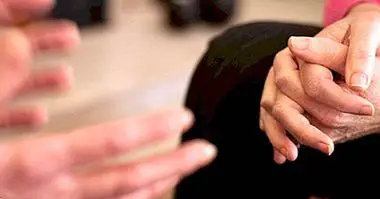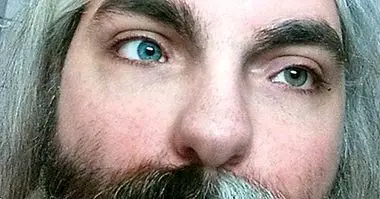Therapy with horses: an alternative therapeutic resource
More and more people are turning to animals looking for a different or complementary way to traditional therapy. While it is true that the most accessible is dog-assisted therapy, there are other options that are in full growth thanks to their specific effects.
The horse has made a hole in the therapeutic world, and there is no lack of reasons, because both are contributing a lot, especially in childhood pathologies. Let's see, then, how is therapy with horses . Why them and not others?
- Related article: "The benefits of dog therapy"
The horse, from Hippocrates until today
The therapies with horse have not been invented today, since Hippocrates told how in Ancient Greece horseback riding was given to people with incurable diseases to improve your self-esteem.
Since then much progress has been made and it is now known that there are mainly three characteristics of this animal that work as a basis for therapy:
1. Your body heat
The horse has a body temperature higher than that of the human being, therefore the transmission of this heat helps in muscle relaxation and stimulates tactile perception . In addition to the smooth movement of the movement causes what is known as "rocking effect" is a feeling that, especially in children, generates security and a space of protection.
2. Its transmission of rhythmic impulses
By means of movement the horse transmits these impulses to the pelvic belt, the spine and the extremities of the rider. Thanks to the concept of cerebral plasticity, it is known that physiological impulses that start in muscle and bone tissue can compensate for damaged neuronal areas by activating new ones. This objective is the same as that sought with physiotherapy, but in this case it is the horse that stimulates.
3. The pattern of locomotion
A pattern of locomotion equivalent to the physiological pattern of human walking it is very useful in animal therapy .
This assumption is very valuable in patients who do not have the necessary control of the head and trunk, for example in people with cerebral palsy. During the ride the patient walks seated, with the necessary time and practice that pattern can be automated and generate improvements in walking.
On the other hand, feeling attached to the horse and noticing the progress of it generates confidence in oneself and in the environment, a key aspect in the therapeutic process.
How is equinotherapy performed?
The benefits of therapy with the horse they are not obtained merely from animal contact , it is necessary to guide and plan the steps of the therapy and follow certain processes to obtain the best benefits.
There are two ways to relate to the horse, so that the patient can adapt the therapy to their needs.
Hippotherapy
The patient benefits from the qualities of the horse adapting your body to movements of the animal Neuromuscular exercises can be added to this process that stimulate muscle tone, balance and coordination.
The therapeutic mounts
This alternative joins the learning of riding a therapeutic goal . The goal is to be an active rider, and is achieved by combining training with therapeutic games and neuromuscular and gymnastic exercises.
It is an integral therapy, that is, it has very different therapeutic effects. It acts above all in the regulation of muscle tone, locomotion, stability of the trunk and head, psychomotricity, and in the construction of body symmetry. It also favors sensory integration and the proprioceptive system (perception of posture and own movements).
In addition, concentration and attention are benefited during therapy, as well as an increase in self-esteem and self-confidence. It influences both verbal and non-verbal communication; Y decreases aggression and promotes values such as cooperation And the responsability.
There are multiple clinical pictures for which this therapy is recommended: cerebral palsy, multiple sclerosis, Down syndrome, scoliosis, lumbago, Parkinson's disease, hyperactivity disorder and attention deficit, autism ... But there are also others for which it is contraindicated as the hip dysplasia, spina bifida, muscular dystrophy (weakness in muscles) or hemophilia (defect in blood clotting)
A final reflection
These innovative therapies are not intended to replace conventional treatments, but offer a complement, that is, the search for a good teamwork that achieves a perfect gear and improves the quality of life of the patient. Equine therapy is another of the many tools available to psychology and health sciences in general to improve the quality of life of patients.



















